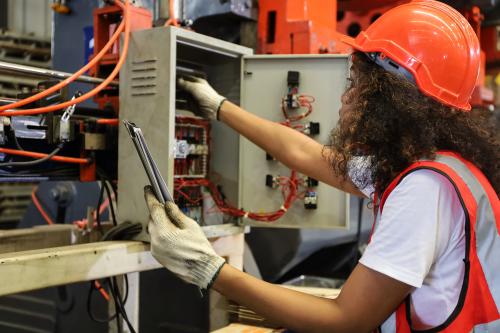Public-private partnerships (PPPs) can be a useful tool for constructing, improving, operating, and maintaining infrastructure. They are particularly enticing when funding is tight, but their track record is mixed. Virginia’s 20-year history with “P3” projects illustrates their promise and their pitfalls.
Despite Virginia’s reputation as one of the country’s best PPP markets, it has had some notable failures. Instead of attracting substantial new private capital, many projects have required taxpayer-subsidized debt, tolls, and traditional government revenues.
Virginia’s PPP agreements vary widely. One of the more beneficial has been the I-495 high-occupancy toll (HOT) lanes project in Northern Virginia, which added capacity to congested highways in the Washington metro region while retaining existing toll-free lanes. Private equity was a significant component of project funding, although state subsidies, state bonds, and federal loans provided most of the cost. The private partner took on true risk of lower-than-projected toll revenues—though it will collect tolls for decades to come.
In contrast, the Downtown/Midtown Tunnel project in Hampton Roads is expanding an existing facility but converting all the lanes, formerly free, to tolls. There is little rationale for the amount of state subsidy provided, tolls will rise at least 3.5% each year through 2070, and taxpayers must compensate the builder for lost revenue if competing alternatives are created. The deal sparked deep opposition when its terms became known.
Another project, a $1.8 billion new Route 460 in rural Southside, would have been almost entirely publicly funded. The road would parallel an existing, relatively uncongested highway, and agencies repeatedly warned that the destructive project was unlikely to receive necessary environmental permits. After signing a contract, retaining all risks, and spending roughly $300 million, the state scrapped the project when further study made it clear it could not be permitted.
Stung by this debacle, the state overhauled its P3 guidelines in 2014 and amended its statute this year. Reforms include increasing transparency and public involvement, requiring a finding of public interest before procurement, and requiring certification that the finding of public interest has not changed before a deal is finalized.
Potential elements of a P3 process suggested by Virginia’s experience include these rules:
- Limit proposals to projects in existing publicly developed transportation plans that include environmental studies to avoid circumventing or undermining normal planning processes.
- Require an independent cost-benefit analysis and analysis of the risks shifted to the private entity.
- Require adequate public input, including releasing cost-benefit and risk analyses and requiring hearings before signing agreements.
- Provide legislative involvement to build political support.
- Prohibit deals unless the risks, liabilities, and responsibilities transferred to the private entity provide enough public benefit to justify not using other procurement methods.
- Limit the amount of toll increases and/or regulate the allowable rate of return.
- Ensure competitive bidding.
- Prohibit or restrict “non-compete” clauses that limit improvements to other facilities.
If a state or locality decides to pursue P3s, these and other steps can help ensure that the projects produce public benefits for as low a price as possible and adequately protect taxpayers, communities, and the environment.


Commentary
PPP projects in Virginia: The good, the bad, and the scrapped
May 4, 2015